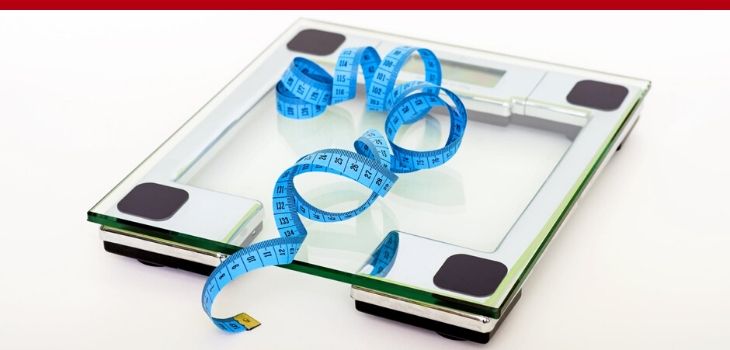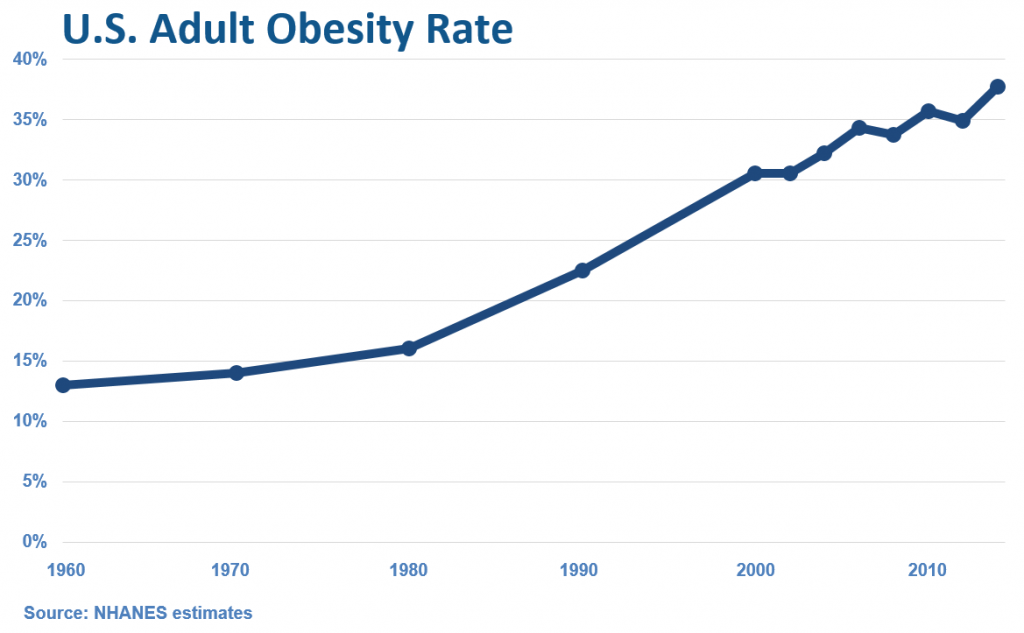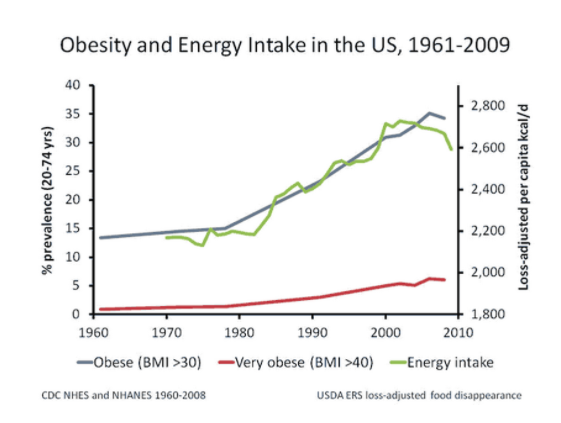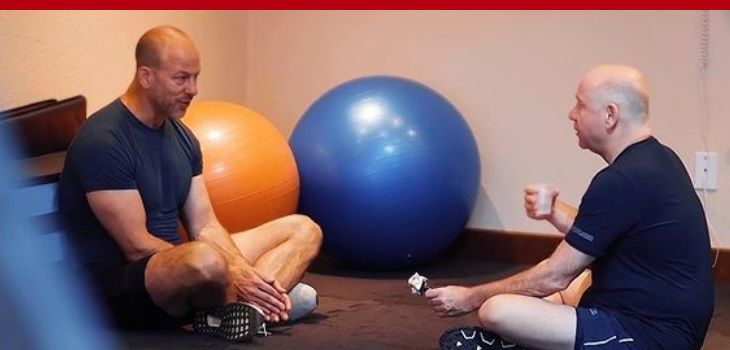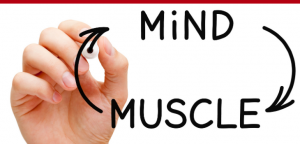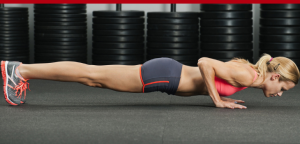by Ted Ryce
310: 5 Reasons You’re Not Losing Fat Even Though You Eat Right And Exercise (And What To Do About It) with Ted Ryce
You’ve been walking the straight and narrow—eating healthy, working out—and yet you’re not dropping pounds or getting fitter. What gives? The answer may be hiding out amid the random things you do over the course of an average day—those little habits that have seemingly no connection to weight loss, but may in fact be sabotaging your best get-fit efforts. Listen to this episode to find out why and what to do about it.
So you started out by making a decision to clean up your diet and to begin an exercise program.
At first the results come fast. A few weeks go by and you’re down a pounds on the scale. Your muscles feel much stronger and you ‘re starting to see a difference in the mirror.
You think, “Wow, why didn’t I do this before. In another few months, I’ll be looking like one of those fitness magazine models!”
Except, that never happens.
A few months in and your results have stalled.
You think, “I need to exercise more and eat ‘cleaner’.”
So you start doing more exercise and only eat whole foods…with an occasional indulgence in some junky goodness.
But you’re STILL not seeing much of a difference. In fact, you’re not sure if you see any difference at all even though you’re doing more exercise than before.
You, my friend, have hit the dreaded plateau.
You think to yourself, “I’m doing everything right. Maybe I hit the limit of my genetic potential. Or maybe my metabolism isn’t as fast as it used to be in my 20s. Maybe I’m just too old to get into great shape.”
Well, like the saying goes, I’ve got good news and bad news.
The good news is that your fat loss plateau is NOT due to a your 40-plus-year-old metabolism or hormone levels or endocrine disrupting chemicals in the environment. Maybe those play a part but none of them are the reason you’ve hit a plateau. And the best news is that you definitely can break through your plateau and start getting results again.
Now for the bad news…
You’re going to have to do things differently because you’re program isn’t good for you anymore. In fact, I’m wagering that you’ll also have to change what you think you know about burning fat and getting lean.
How do I know? Well, I’ve been in the health & fitness industry for over 18 years. I know how confusing it can be to weed through all the misinformation and B.S. to figure out what you actually need to do to get in shape.
Hell, I’ve been in the industry for nearly two decades and studied pre-med/biology in university and I’ve still had a problem vetting all the claims and new findings to figure out what would give my clients (and myself) the best results.
I’ve spent thousands of dollars and thousands of hours taking courses and attending seminars, hiring coaches and speaking 1-on-1 with some of the best and brightest researchers, nutritionists, strength coaches, medical doctors and more on my podcast Legendary Life.
If you relate to any of the above statements then you’re going to appreciate what I’m about to teach you about the #1 key to weight loss, why it’s so hard to lose fat, your metabolism, how fat loss works and how to apply what you learn in this article to get results!
Why It’s So Hard To Lose Fat
Most people hear about the skyrocketing rates of obesity and just assume that being overweight is some unexplainable phenomenon.
My dad even asked me why being overweight is such a problem in America–especially since there are so many diet books, gyms, health blogs, etc. ALL about how lose weight. He was dumbfounded.
In fact, the rate of obesity has doubled worldwide and more than doubled in the US since 1980.
While some people argue that it’s the sugar, endocrine disrupting chemicals, genetically modified foods or disrupted gut microbiomes that has caused us to get fatter, the more likely answer is much more simple.
To answer this question, let’s check out a graph from one of my favorite super scientists who are helping the fight against obesity. His name Stephan Guyenet and he is neurobiologist and obesity researcher. (And in case you’re wondering what the heck a neurobiologist is doing studying obesity, I highly recommend you check out my interview with him on Legendary Life.)
In the graph below, Stephan plotted calorie intake (green line) the prevalence of obesity (the blue and red lines) in the US from 1960 to 2009.
As you can see, the amount of food we eat has steadily risen decade after decade as has our waistlines.
Just to be clear, I’m also concerned about gut dysbiosis, endocrine disrupting chemicals, stress, poor quality sleep and other factors that are likely contributing to obesity and poor health. But I ‘m always concerned with the most influential factor, the biggest bang for your buck, and it’s clear that overeating and a sedentary lifestyle are the biggest culprits of the modern world’s obesity crisis.
Why Hunter-Gatherers Don’t Have New Year’s Resolutions
One of my favorite studies to bring up is where researchers brought 24 overweight men and had them live under simulated Paleolithic conditions for 4 days and 4 nights.
They lived outdoors without tents, walked about 25,000 steps per day, were active for 5-6 hours and ate around 1747 calories per day.
What were the results?
Every single one of them:
- Lost weight
- Lost body fat
- Lost visceral fat
- Increased their muscle mass
- Improved their blood biomarkers for metabolic health
…In just 4 days!
Do you think that the men in the study may have thought the same thing about their metabolism, hormones, age, etc. for being the reasons that they were getting fatter? I’d bet money on it.
But they got impressive results in just 4 days.
What going on?
Like this show? Please leave us a review here — even one sentence helps! Consider including your Instagram handle so we can thank you personally.
Modern Life Makes You Fat
For the majority of human history, we have lived like hunter-gatherers. And it’s been well documented that as people move from natural-living cultures to modernized lifestyles, the rates of common Western diseases start to increase. Obesity and weight gain also increase.
We don’t even have to go back that far to see how much life has changed here in the US. In 1890, more than 70% of the work force had jobs involving manual labor and 43% were farmers.
Walmart, Costco, Whole Foods, refrigerators, electric ovens, washing machines, and HD televisions didn’t exist. Owning a car was rare and reserved for the wealthy. Procuring and preparing our food took hard work and life itself was exercise.
Fast forward to today where the majority of us have cars, TVs, cable subscriptions, a laundry list of shows we love to watch, most of us work at desks and many of us don’t even cook our meals anymore.
While the massive technological advancement has freed us of the hardships of our pre-industrial past, there has been a price to pay for progress.
We don’t move enough, we are surrounded by abundant sources of food and our brains are wired to eat like we’re not sure if the food in the fridge will be there when we wake up in the morning.
Scientists call this a gene-environment mismatch. That simply means that our bodies are programmed to survive in an environment that doesn’t resemble our modern world. And our health and waistlines are paying the price.
It’s a lot to take in but there are plenty of things you can do to take charge of your health, lose fat and prevent disease without moving back into the woods and living like a hunter-gatherer.
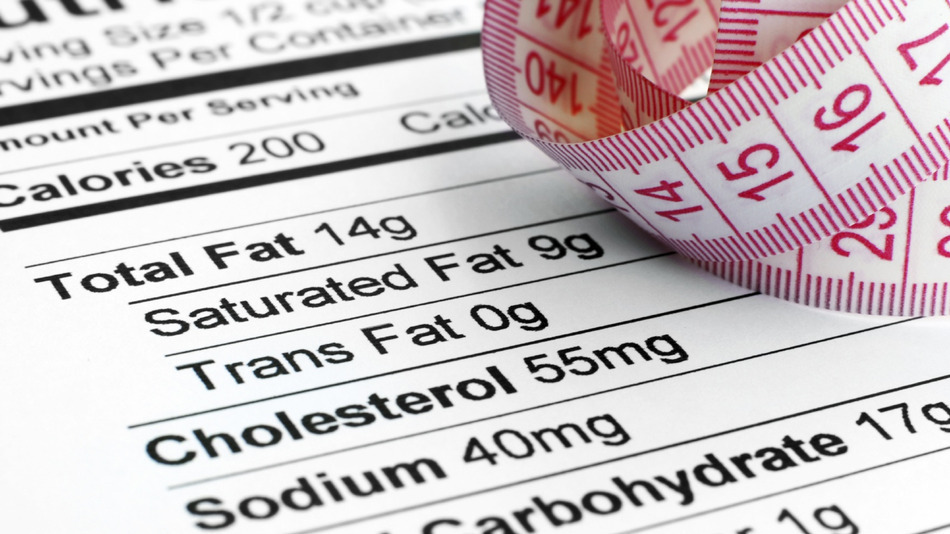 The #1 Key To Losing Weight
The #1 Key To Losing Weight
I can sum this up in two words: energy balance.
You need a certain amount of energy (in the form of calories) to stay alive and to move around. You get this energy from food or from the stored energy on your body (i.e. your body fat).
Getting more energy out of the environment than you spend to get it is the story of survival for all animals—including us.
The theory for applying energy balance to weight loss is simple:
- If you eat less energy than you burn, you will lose weight
- If you take in more energy than you burn, you gain weight
Energy In – Energy Out = Changes in your body weight
Scientists breakdown our body into 2 parts:
- Lean body mass (water, muscle, organs, bone, and everything else that isn’t fat)
- Fat mass (stored energy)
While the energy balance equation determines body weight, it doesn’t tell us much about body fat levels and muscle mass which are influenced by things like your exercise habits (especially lifting weights), your macronutrient proportions (especially protein), sex hormone levels (especially testosterone), your genes (number of myosatellite cells) and age to name a few.
Many people get frustrated with the energy balance equation (aka calories in/calories out) doesn’t work out like they straightforward math they were expecting. And it’s totally understandable because the numbers don’t often add up—especially if some of the above details aren’t taken into consideration.
However, it doesn’t mean that calories in/calories out is wrong. It means that it’s misunderstood. And the equation is much more complicated than it seems.
And as I’ve mentioned earlier, many factors affect energy balance. In addition to that, your metabolism is “adaptive”.
In the not-too-distant-past, people said, “to lose 1lb of fat you need to burn 3500 calories”. But if it were that simple, it would be easy to starve to death—especially in the past where there wasn’t a Whole Foods to go buy your non-GMO, organic, gluten-free granola and a food shortage or famine was just a matter of time.
 The 4 Parts Of Your Metabolism
The 4 Parts Of Your Metabolism
Although our metabolism is complex and in constant flux, there are four key parts to this complicated system.
- Resting Metabolic Rate (RMR)
RMR is the number of calories you burn each day at rest. That’s right. Just staying alive is how you burn about 60 percent of your ‘energy out’ part of the equation. Your RMR also depends on your bodyweight, sex, age and more. Another fun fact is that your brain demands around 20 percent of your RMR—which has led to scientific inquiry as to whether ‘thinking hard’ burns more calories.
A key player in why weight loss stalls for many people is that, in general, a bigger body has higher RMR. When you lose weight, your RMR slows just because you’re carrying around less mass. This goes counter to what most people think about fatter people having a slower metabolic rate.
On top of that, RMR varies from person to person as much as 15%. So you and that person next to you doing dumbbell curls might be burning more (or less) calories while putting in the same effort.
- Thermic Effect Of Food (TEF)
TEF is how many calories you burn by eating and digesting your food. It surprises many people when I tell them that eating food actually burns calories and that digestion is a metabolically intensive process.
If you’ve ever felt hot after eating, you’ve experienced this firsthand. That’s why eating right before bed can interfere with your sleep if you’re one of those people (like me) who can’t sleep when it’s too hot.
Another important fact to mention is that the TEF for protein (20-35%) is much higher than carbohydrates and fats (around 5-6% for each). This is another reason why higher protein diets are superior for fat loss.
- Thermic Effect of Exercise (TEE)
Of course, you knew this one. This is why people who work out have an easier time keeping the fat off than those who don’t.
To be clear, when we talk about TEE, we’re referring to purposeful workouts and hard training. Not going for a light walk in the park. In general, the harder and longer you workout, the more calories you burn. That’s why building strength and a high work capacity can help keep you lean.
It’s also important to keep in mind that overdoing exercise can lead to injuries and overtraining. That’s why having an appropriate workout for your current fitness level is important. Long-term consistency beats two months of hard workouts that end up injuring you.
- Non-Exercise Activity Thermogenesis (NEAT)
NEAT is the calories you burn through all non-exercise activities. This includes everything from fidgeting, standing upright, and jumping up explosively from the couch when your favorite team scores a touchdown.
NEAT can vary greatly from person to person. Some people seem more inclined to fidget and have a hard time staying still while others have a hard time doing anything but lounging around.
Although NEAT isn’t as sexy as a hard deadlift workout or HIIT session, it’s really the greatest opportunity for burning more calories during the day without putting hard stress on your joints. Getting up from your seat every hour, using a treadmill or standing desk and other strategies can help you burn potentially many more calories than you could with a hard hour of exercise in the gym. So keep this in mind and find more opportunities to move around. Personally, I love to track my steps using the Steps app. It’s free and simple to set up and use. And let’s be real—you may forget your Fitbit but you’ll always have your phone with you, won’t you
5 Reasons You’re Not Losing Fat (Even Though You Eat Right And Exercise)
Now let’s examine the reasons that you’re not losing fat—even though you’re working out in the gym and doing your best to eat well.
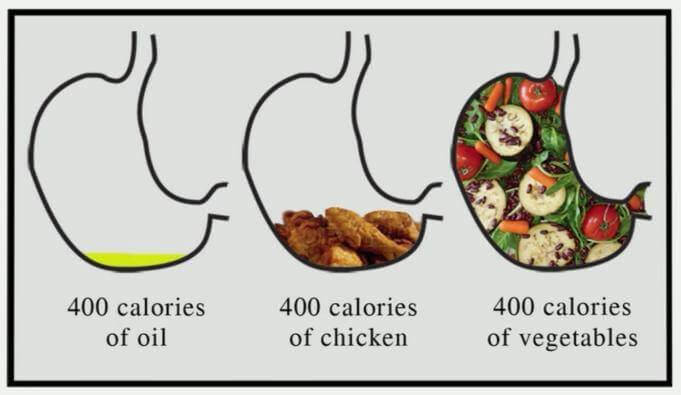
- You’re eating too much
Specifically, you’re eating too many calories. Why don’t I say you’re eating too much food? I think this picture says it all. While it’s not the size and calories aren’t that accurate, the point is clear: different foods have different levels of calorie-density.
Vegetables take up a lot of space but they’re very low in calories. Fats like coconut oil or olive oil take up very little space but are very calorie-dense.
I know you’ve probably been told that calories don’t matter. But I’m here to tell you that 100 years of metabolic ward research are very clear that calories are the #1 thing that matters for weight/fat loss.
If you want to learn more then I highly recommend my 7 Fat Loss Lies That You Need To Stop Believing article.
What to do:
So what should you do if you’re eating too many calories? The first thing I recommend is that you keep a food journal. You can use an app like MyFitnessPal. It’s free and will let you log your food while showing you the calorie and macronutrient breakdown of what you eat and track for 7 days.
If you’re not tech-savvy and want to do things old school, use a paper journal and record 7 days of what you eat. Make sure you get the amounts of what you eat as well as you’ll use that to calculate your calorie intake.
After you see how many calories you’re eating per day, you can start to cut that by 10-15% to start to see some weight loss.
And if you want me to take you through the entire process and save you hours of work and hassle, then sign up for my Legendary Lean body transformation group here.
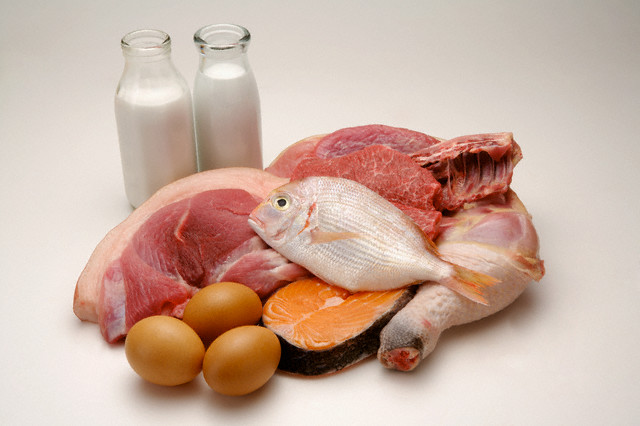
- You’re not eating enough protein
Aside from making sure you’re in a calorie deficit, your protein intake is the next most important factor.
Why?
Protein does amazing things including:
– Helps you maintain lean body mass on a fat loss diet.
– Burns more calories to digest (has a higher TEF)
– Causes you to feel satisfied so you don’t overeat
So making sure your protein intake is on the high side or you’ll miss out on all the fat burning and muscle-sparing benefits.
What to do:
“How much protein should I have?” should be your next question.
The debate about this rages on and new research comes out regularly. The typical bodybuilding recommendation is to have 1 gram of protein per a pound of bodyweight.
However, when you’re eating in a caloric deficit, it’s best to keep your protein intake a bit higher if you’re on the lean side at 1.2g per lb. A systematic review out of AUT University found that:
“Protein needs for energy-restricted resistance-trained athletes are likely 2.3-3.1g/kg of FFM [1 – 1.4 grams per pound of fat free mass] scaled upwards with severity of caloric restriction and leanness.”
If you’re obese, then keep your protein and on the moderate side at 0.8g per lb. If you know your body fat percentage, because you’ve had it measured accurately, you can also eat 1g per lb of lean body mass. So if you’re a 200lb person who is 40% body fat, then you have 120lbs of lean body mass. Therefore, you’d shoot for 120 grams of protein per day when you’re on a calorie-restricted diet for fat loss.

- You’re not working out as hard as you think
This is especially for two types of people:
1) People who are lifting heavy (i.e. 5 reps and under per set)
2) People who are lifting too light (over 12 reps per set)
What’s the issue with these two approaches while you’re trying to lose fat?
Let’s start with lifting heavy. Lifting in the 5 reps and under range means that your sets are short and you’re taking long rest periods beneath them. That’s NOT ideal for training for fat loss. You don’t use up a significant amount of glycogen (stored carbohydrate in your muscles) while doing this type of training so you don’t cause much metabolic stress i.e. you’re burning less calories with this approach—unless you’re spending 90-120 minutes in the gym. And that becomes difficult to do in a calorie deficit.
Lifting in the lighter rep range—let’s say over 125 reps—can also be an issue. Although you may feel like you’re getting a great workout, pump and sweat with 15 or more reps per set, I find that it’s not ideal for maintaining or building muscle for the majority of my clients. Although this type of training creates a lot of metabolic stress that makes your muscles burn, and there is research out of McMaster University saying that high reps work just fine for building muscle, I find the tension isn’t optimal after experimenting with numerous clients on fat loss diets.
What to do:
The workouts I have my clients do while following fat loss diets are usually in the 6-12 rep range. I particularly like 6-8 reps per set as I find that range provides the optimal level of tension and metabolic stress in the muscles—while avoiding unnecessary systemic stress hat higher reps would cause.
If you’ve been performing low reps (5 or under) or high reps (15 or more), try changing to either the 6-8 or 10-12 rep range for a month and see what happens.
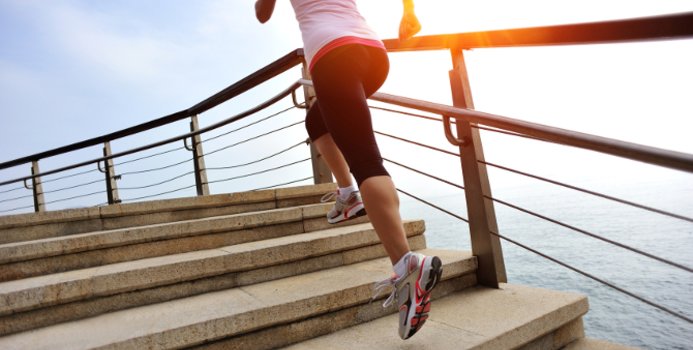
- You don’t move much unless you’re at the gym
One of the harshest realizations I had during my 18-year fitness career was that even though I went into the gym and crushed weights 4-6 times per week, I was still quite sedentary. Especially when compared to natural living cultures.
Sure, I worked out hard for hours every week. But when I wasn’t at the gym I was sitting on my butt. Even when I trained clients I would often sit during our sessions.
And what I’m getting around to is that you’re a lot more sedentary than you think. We all are.
If you spend most of the day at work and home sitting, lying down, binging on Netflix, playing video games, surfing the web, reading and returning email, driving automobiles, and reading then you are living a predominantly sedentary lifestyle. And it’s affecting your fat loss.
Most people mistakenly think that they need to hit some HIIT or cardio sessions to burn fat. The reality is that we need to be more active in general. In other words, you need more NEAT—which stands for non-exercise activity thermogenesis.
In fact, I’m here to tell you that you can burn many more calories with NEAT than hard HIIT training or standard cardio exercise. Declining levels of NEAT have played a major role in the obesity epidemic that the modernized world is experiencing.
NEAT shows a wide range and can vary by up to 2000 calories per day between two individuals of similar size —all from activities that aren’t all-out work or exercise.
You see, before agriculture, industrial and digital revolutions we used to spend all our time procuring and preparing food—in addition to all the other physical tasks we had to perform just to survive.
I want to again remind you of the study I mentioned above where the participants lived in simulated Paleolithic conditions for 4 days outdoors without tents. The daily hiking performance was about 24963 steps per day and were active for about 5.5 hours per day.
They lost an average of 10% body fat, 13% of their visceral fat, gained some muscle and improved their biomarkers for metabolic health—in just four days!
No HIIT. No steady state cardio. No lifting weights.
What to do:
No, you don’t have to move into the wilderness or go to “Paleo Camp” to get more movement in.
What I recommend that you do is download a free step-tracking app (Steps is the one I use) or get yourself a Fitbit and track how many steps you’re getting in per a day. I recommend that you start with the free app as most of us wouldn’t be caught dead without our phones but a wearable might be a pain to remember.
The common recommendation is 10k per day. But I find that’s a lot for most people. I have my coaching clients track a week to see what their weekly average steps are, then I have them make a goal to increase them to lose more fat. This works very well.
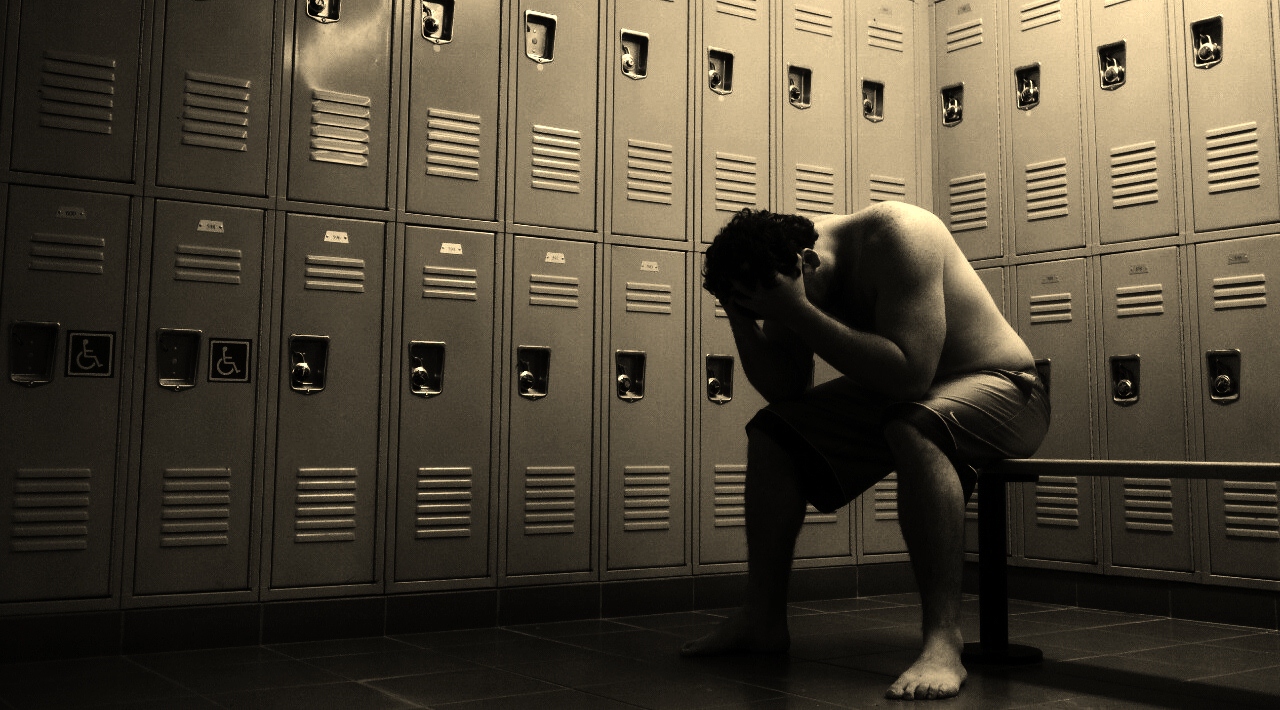
- Your metabolism has slowed down
This is for the people who are reading who have lost a few pounds but have hit a plateau. If you haven’t been on a diet recently then stick with the 4 reasons I mentioned above.
So you lost a few pounds making some nutrition and exercise tweaks. But now you’ve hit the dreaded plateau where you just can’t seem to lose any more weight.
You’ve tried to push a little harder with your workouts or do a bit more but it’s not working. You’ve tried “cleaning up” your diet and that’s not working either. Or maybe you’ve tracked your calories and you don’t understand why the calorie-restricted plan that got you to lose weight in the beginning has stopped working.
And let’s assume you’ve been doing everything right and you’re not one of those people who are underestimating their snacking or overdoing their “cheat” meals.
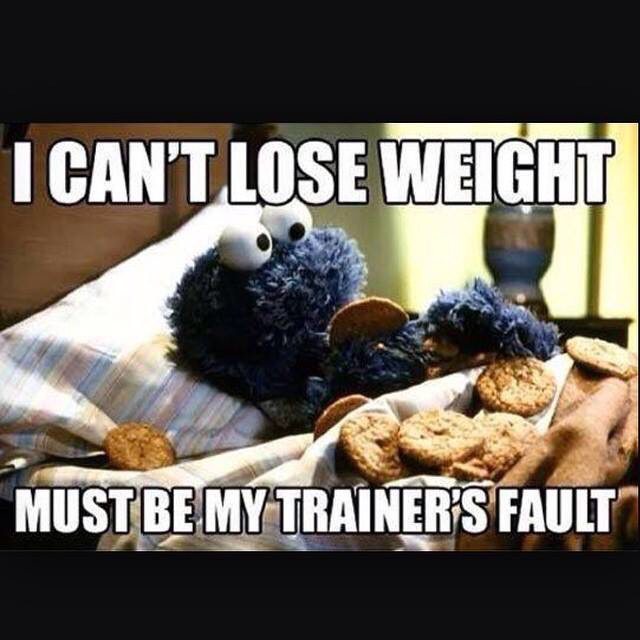
And you’ve been keeping track of your steps to make sure your NEAT hasn’t declined. As I mentioned earlier, some studies have shown up to 60% of changes in your total daily energy expenditure (TDEE) are due to NEAT in response to changes in energy balance. This can be huge in terms of fat loss.
In this case, your metabolism may have slowed down. And it’s completely normal. This happens because of two reasons:
- You weigh less and a lighter body burns less calories.
Contrary to what most people think, heavier individuals have a higher metabolic rate compared to lighter individuals. And this makes perfect sense. Which vehicle would burn more gas idling? A Cadillac Escalade or a Mini Cooper? It goes without saying that the bigger vehicle, in general, with use more gas than the smaller one. The same goes for human beings. A lighter body burns less energy. Period.
- Metabolic Adaptation
One reason why the calories in/calories out hypothesis drives people crazy is that the calories out side will change. You see, your body cares about one thing: survival. And it doesn’t care about getting a swimsuit-ready body for summer.
And this is a good thing. If you dropped your food intake but your metabolism stayed the same, it would be much easier to starve to death. It’s hard to appreciate that if you’re living in the modernized world of grocery store chains and food delivery but malnutrition is still big deal in other parts of the world. In fact, the United Nations Food and Agriculture Organization estimates that about 795 million people of the 7.3 billion people in the world were suffering from chronic undernourishment in 2014-2016.
So to protect you during times of less food (aka dieting in the modern world) your body adapts to protect you. This is called adaptive thermogenesis and it’s responsible for the hormonal side of the slowed metabolism. It’s understood that adaptive thermogenesis is caused by changes in energy expenditure, autonomic nervous system function, and neuroendocrine function. Here are a few of the things that happen:
- A decrease in the leptin, satiety hormone.
- A decrease in thyroid hormone levels (conversion of T4 to T3 is impaired on a calorie-restricted diet) .
- A drop in sympathetic nervous system activity
It seems that leptin plays the biggest role here as many of the metabolic changes during dieting reversed when researchers injected participants with leptin replacement. Unfortunately, injecting pharmaceutical-grade leptin during dieting is expensive and comes with side effects. So it’s not an option for many of us. I should also mention that the supplements on the market purporting to help maintain leptin levels during dieting haven’t been proven to work so save your money.
What to do:
If leptin supplements don’t work and injecting letpin is expensive and has side effects, then what should you do?
The answer is simple: take a diet break.
The next question should be how long of a diet break should you take. While the science isn’t definitive on how long you should take a diet break to ramp up your metabolism after hitting a plateau, I use 1-2 weeks for my clients.
This is partly determined by how they feel psychologically. Some people have a hard time being off a diet for 2 weeks and feel like they might lose their motivation and self-control. But I recommend at least taking a week off then tweaking from there.
What should you eat on your diet break?
This is another important question. The most important factor is to eat enough to allow your body to return to its normal metabolic state before you started your diet but not so much that you start gaining fat. I say fat specifically because when you start eating more food—particularly carbohydrates—you’ll start to gain water weight as you begin storing carbs in your muscles as glycogen. For every gram of carbohydrate that you store, you’ll also store around 3 grams of water.
So it’s normal when the scale goes up a few pounds when you begin eating more food. However, it’s also necessary that you eat more—especially carbohydrates. Why? Because eating carbohydrates have the biggest impact on returning leptin levels to normal. Fat doesn’t have any effect. I should also mention that drinking alcohol inhibits leptin so keep that in mind as well.
Conclusion
Notice how I didn’t mention that it’s your age, low testosterone, endocrine disrupting chemicals in the environment or GMOs that are the reason that you’re not getting results even though you’re exercising and eating “clean”? And—unlike some bodybuilding idiots who say it’s only about calories and macros—it’s not that I don’t care about those things either. But I like to focus on the big principles that give you big results. I’ve noticed this terrible trend in the fitness industry to make fat loss all about sexy sounding reasons like eating testosterone boosting foods or doing special workouts.
However, the TRUTH is less sexy. And I write for the people who want to be told the truth—regardless of how unglamorous it is.
So if you’re finding yourself in a fat loss plateau even though you’re working out regularly and making solid nutrition choices, go through this list of reasons and match them up to what you’re doing. I guarantee that one of these reasons is behind your lack of progress.
Here they are again:
- You’re eating too many calories
- You’re not eating enough protein
- You’re not working out as hard as you think
- You’re not moving much outside the gym
- Your metabolism has slowed down
And make sure you follow my recommendations to fix the situation.
If you’re ready to do a Summer reset and lose those extra pounds in the next 10 days, take advantage of our special offer to get you a meal plan that works with your “metabolic age score”. But, hurry up to save up to 75%.
Thanks for Listening!
Thanks so much for joining us again this week. Have some feedback you’d like to share? Leave a note in the comment section below!
If you enjoyed this episode, please share it using the social media buttons you see at the top of the post.
If you’re ready to have the body you deserve and get in control of your health and fitness once and for all, you should watch our new FREE Masterclass: Fit Over 40: How To Lose Fat, Build Strength, And Live A Healthier Life In Your 40s & 50s!
In this brand new masterclass you will learn everything you need to create a leaner, stronger, and healthier body even if you’re injured, unmotivated, or super busy.



